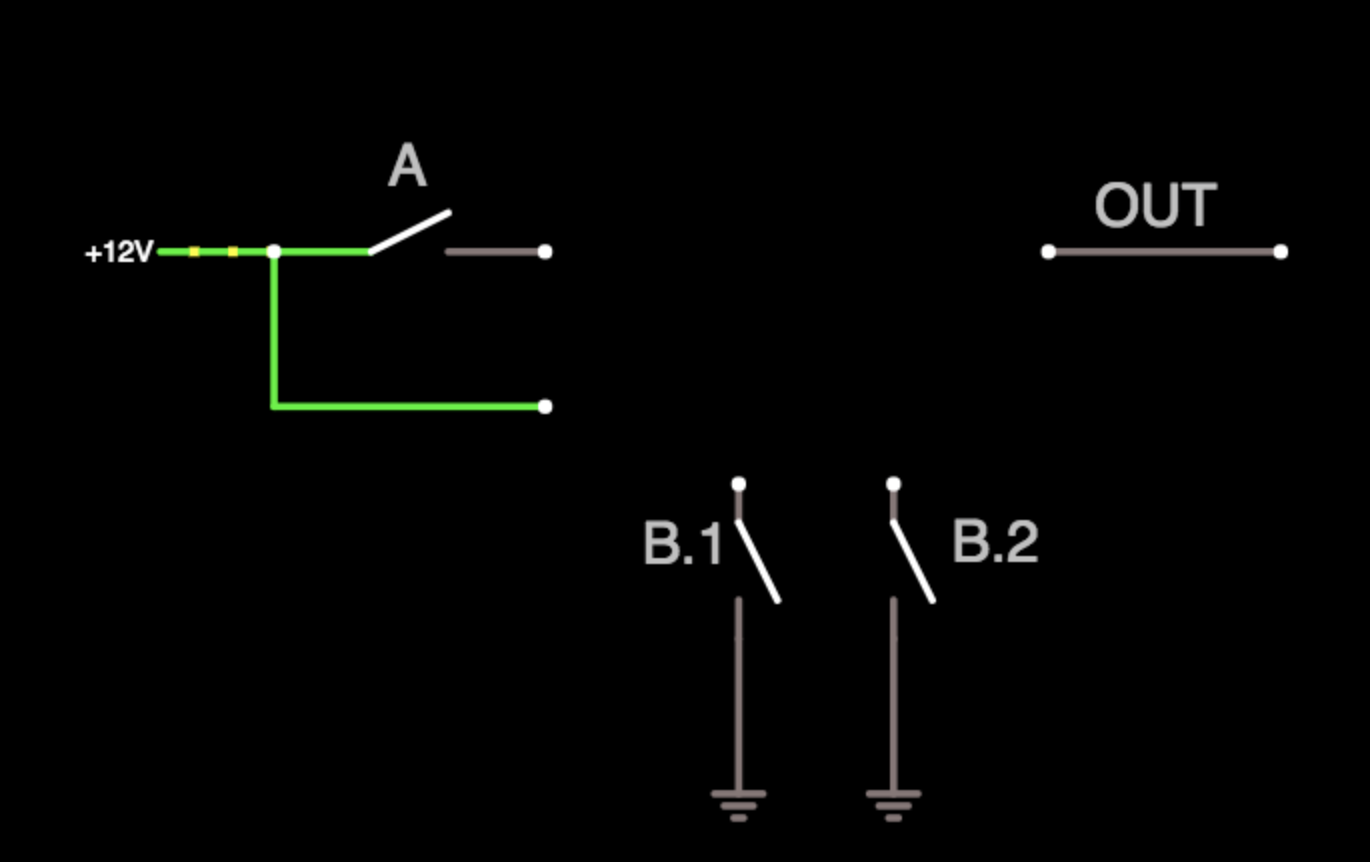I'm trying to build a circuit around an existing switch that allows another component to override the switch state. (Our component is a computer and the feature we're trying to build is remote-activation).
I want the "ON/OFF" state to reflect the last thing to toggle the state. (i.e. If the switch is "on", our component can logically turn it off. If the switch is toggled off, nothing happens, then if the switch is toggled back on it turns on).
I control both sides of the switch and I have two "short to ground" switches (controlled by our component).
I don't want to depend on either of the two switches being held closed for ON mode (i.e. The short to ground switches should work like push button switches). This is so that software failures/resets on our component won't accidentally set the mode to OFF.
I'm pretty sure I can do this with some mosfet latching circuits but I'm quite novice at electronic design. Any suggestions are appreciated!
Edit: here's some more clarifying info:
Here's a state diagram of what I want. Both B.1 and B.2 should only even be pulsed closed, so they can't be counted on to be held closed to achieve a desired state. Notably, the desired behavior is edge-triggered by the switch state.




